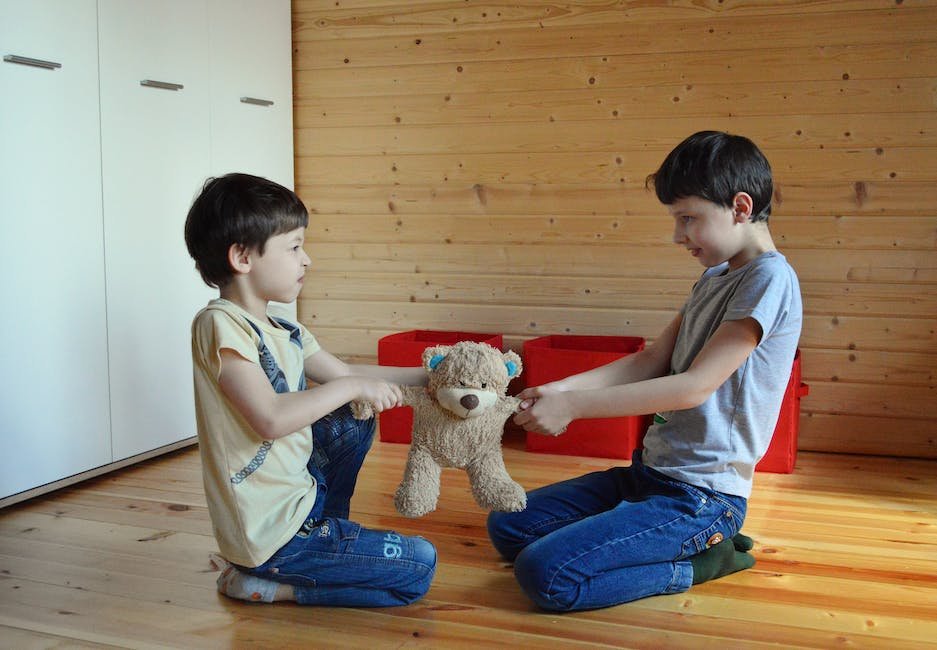
Physical aggression in children can be a challenging and concerning issue for many families, and understanding the underlying causes is essential for effective management. While it is not uncommon for children to exhibit some form of aggressive behavior during their development, those with Autism Spectrum Disorder (ASD) and Attention-Deficit/Hyperactivity Disorder (ADHD) may face unique challenges that can lead to heightened instances of physical aggression. Exploring the complex reasons behind these behaviors, from neurological and sensory struggles to difficulty with communication and impulse control, provides valuable insights into the lives of these children and the distinct ways in which ASD and ADHD can manifest. As we delve into the intricacies of these conditions, it becomes clear that appreciating their nuances is vital for tailoring strategies that address the individual challenges each child might face.
Understanding Physical Aggression in Autism and ADHD
Understanding Physical Aggression in Children with Autism or ADHD
Hey there, fellow parents and caregivers! Today, let’s have a heart-to-heart about a topic that is often challenging to navigate: physical aggression in children with Autism Spectrum Disorder (ASD) or Attention Deficit Hyperactivity Disorder (ADHD). While every child is unique, and there’s no one-size-fits-all reason, understanding what can contribute to aggressive behaviors can help in managing it effectively.
Sensory Overwhelm: For kiddos with ASD, sensory processing can be intense. A tag in a shirt or the hum of a fluorescent light that most wouldn’t notice might be overwhelming. This sensory overload can lead to hitting, kicking, or acting out in a physical way as a means to communicate distress.
Frustration Communication: Similarly, both children with ADHD and Autism may struggle with verbal communication. When words fail them, their frustrations can bubble over into physical actions. It’s their way of expressing emotions they can’t otherwise articulate.
Impulse Control Challenges: ADHD comes with a side order of impulsivity. Children might act before thinking, resulting in a physical outcome they didn’t necessarily intend. This isn’t about malicious intent; it’s a neurological hiccup in the brain’s executive functioning that regulates impulses.
Difficulty with Social Cues: Relationships and social interactions can be like a dance – and kids with ASD or ADHD may have trouble learning the steps. Misreading social cues can cause misunderstandings, leading to aggression born out of frustration or fear.
Trying to Gain Control: When things feel unpredictable, some children with Autism or ADHD might use aggression as a tool to exert some semblance of control in their environment. A predictable response to aggression, even if it’s negative attention, might paradoxically feel reassuring.
Mimicking Behavior: Monkey see, monkey do. Children often learn by example, and sometimes aggression is inadvertently modeled. Whether it’s in the media or in their environment, if they observe aggressive behavior getting results, they might adopt it as a strategy.
Underlying Medical Issues: Never overlook the possibility of medical issues. Discomfort, pain, or even certain medications can have side effects that manifest as aggression. Always consult with a healthcare professional to rule out or address these potential causes.
Understanding these triggers is the first step. From there, it’s all about supportive strategies like creating a sensory-friendly environment, learning alternative communication methods, teaching social skills, and maintaining a predictable routine. Seeking support from professionals who specialize in ASD and ADHD can provide customized strategies to meet children’s needs.
In the thick of it, remember that aggression isn’t a reflection of parenting skills – one is doing the best they can with the information they have. Patience, education, and a loving approach can make a world of difference. Together, let’s continue building a compassionate community that embraces all our unique little humans and empowers them to thrive.

Strategies for Managing Aggression in ASD and ADHD
Nurturing Emotional Regulation in Children with ASD or ADHD
Understanding the roots of aggression in children with ASD (Autism Spectrum Disorder) or ADHD (Attention Deficit Hyperactivity Disorder) can involve a careful evaluation of their unique triggers. However, turning that understanding into effective day-to-day management requires patience, empathy, and a few key strategies.
Establish Predictable Routines
Children with ASD or ADHD often thrive on routine. It provides a sense of security and structure that can diminish anxiety and uncertainty, which, in turn, can decrease the likelihood of aggressive outbreaks. Predictable routines around meals, sleep, and activities can serve as an emotional anchor, helping these kids navigate their daily life with fewer surprises that could set off temper flare-ups.
Safe Spaces
Create a calming corner or a quiet nook that’s solely dedicated to downtime. Just knowing there’s a safe retreat can be a huge relief for children who may otherwise feel cornered by their own emotions. This space can be filled with items that offer comfort such as weighted blankets, noise-canceling headphones, or favorite books. Teach them that it’s okay to excuse themselves to this haven when they feel overwhelmed.
Positive Reinforcement
Praise and rewards can go a long way in shaping behavior. By focusing on and reinforcing positive actions, children learn what behaviors are expected and appreciated. This teaches them that aggression is not an effective way to get attention or communicate their needs. Setting up a reward system can also encourage them to practice self-regulation and seek out alternative ways to express their feelings.
Skill-Building Activities
Social skills groups or sessions with therapy professionals can provide invaluable practice in a structured environment. In these settings, children can learn interactive skills like taking turns, empathizing with others, and understanding personal space. At home, role-playing or rehearsing scenarios can help children prepare for real-life social situations, equipping them to handle them with less stress and aggression.
Consistent Boundaries
Clear and consistent boundaries provide children with a sense of safety and help them understand what is acceptable behavior. Ensure these boundaries are communicated clearly and that any consequences for crossing them are equally as clear and consistently applied. This consistency helps to build an environment where expectations are known, and there’s less room for testing limits through aggressive behavior.
Collaborative Problem-Solving
Involve your child in finding solutions to their challenges. When they’re calm, discuss what causes their aggressive episodes and brainstorm together on approaches that they think could help them cope better. Giving them a say in their own management strategies can stimulate ownership and a better commitment to practicing self-control.
Encourage Physical Activity
Regular exercise can be a powerful outlet for pent-up energy or frustration. It helps burn off the excess energy that might otherwise fuel aggression, and the endorphins produced can improve mood. Whether it’s a daily walk, a game of catch in the backyard, or a dance session in the living room, physical activity should be a non-negotiable part of their routine.
At its core, managing aggression in children with ASD or ADHD boils down to understanding, empathy, and consistency. Weaving in these daily strategies can foster a sense of balance, predictability, and security, setting the stage for children to develop healthier ways to cope with and express their emotions both at home and in social settings. Remember, each child is unique, and what works for one may not work for another. Stay flexible, compassionate, and supportive, ensuring the journey to emotional regulation is paved with love and understanding.

Impact of Aggression on Family Dynamics
Navigating the Waves of Aggression: Harmonizing Sibling Relationships
When tempers flare and little hands become less than gentle, the tranquility of family life can feel more like a stormy sea. Physical aggression within the sibling dynamic can lead not only to bruised skin but also to bruised relationships, impacting the entire family’s emotional landscape. It’s essential to delve into not just the immediate reactive measures but also the preventive strategies that can bring equilibrium back to the household.
In the thick of parenting, it’s common to witness territorial disputes and competition for attention bloom into physical confrontations between siblings. These outbursts aren’t just disruptive; they can lay down patterns for how siblings interact for years to come. When one child repeatedly uses aggression to express themselves or achieve goals, it can create an environment of fear and anxiety for the others. This tension can spill over into every corner of family life, from quiet evenings at home to social gatherings and beyond.
Moreover, the imprints of these interactions travel with children outside the home. Aggressive habits formed in the living room can make their way into classrooms and playgrounds. Children may struggle to form friendships or may be labeled as ‘the bully,’ which can hinder their social and emotional development.
And let’s not forget the impact on parents. Navigating repeated aggressive events among siblings can be emotionally taxing, often leading to feelings of self-blame, frustration, or helplessness. This can strain the partnership between co-parents or cause single parents to feel overwhelmed. Consequently, it becomes imperative that the energy poured into managing conflicts doesn’t eclipse the time and attention given to each child individually or the maintenance of a nurturing relationship between partners.
Fortunately, there’s a toolkit brimming with strategies that can mitigate the frequency and intensity of these scuffles. The key lies in proactive measures and a consistent, calm approach. For instance, teaching children alternative ways to express their emotions—such as using words or art—can curb the instinct to lash out physically. Equipping them with conflict resolution skills will serve them well, not only in their sibling relationships but also in interactions with peers.
It is also valuable to recognize the differing needs of each child, ensuring they feel heard and understood. Regular family meetings can be a forum where every member of the family, big or small, voices their concerns and learns to negotiate and compromise. This collective problem-solving approach empowers children and encourages them to invest in peaceful coexistence.
Embracing harmony in a bustling household might seem daunting, but it is attainable with a combination of empathy, structure, and an eye on the long game. The journey of brotherhood and sisterhood, peppered with both rivalries and revelries, is an art and a science. It is within this intricate dance of dynamic family life that children learn and grow, discovering the profound bonds that tether hearts long after the toy battles are over.

Professional Support and Therapeutic Interventions
Navigating the Road to Professional Help for Managing Aggression in Children with ASD and ADHD
As devoted parents and caregivers, the well-being of our children is a paramount concern, especially when it comes to managing aggression in children with Autism Spectrum Disorder (ASD) and Attention Deficit Hyperactivity Disorder (ADHD). While home-based strategies are essential, sometimes circumstances necessitate professional intervention to ensure our kids thrive. Let’s dive into when and how professional help should be sought out.
Timing is everything, and noticing persistent patterns in aggressive behavior despite consistent home strategies is a cue for considering professional help. When aggression poses a safety risk to the child or others, or disrupts family harmony and the child’s ability to learn and socialize, it’s time to turn the dial towards external support.
Seeking a professional’s guidance should begin with a thorough evaluation. A pediatrician or child psychologist trained in developmental disorders can assess if the aggression is part of the child’s diagnosis or if there are other contributing factors like anxiety or an undetected learning disability. They will look beyond the surface to understand the full picture of the child’s experiences and needs.
Trust and rapport are essential, so finding a professional who is a good fit for the child and family is key. Involving the child in the process and ensuring they feel comfortable with the professional can make a significant difference in the effectiveness of the treatment.
Different therapists might specialize in various approaches. Some might use Cognitive Behavioral Therapy (CBT) to help children recognize and change thought patterns that lead to aggression. Applied Behavior Analysis (ABA) is another common therapy that focuses on teaching positive behaviors and reducing negative ones in children with ASD.
Medication may also be part of managing aggression in some cases. While not a standalone solution, it can be an important piece of the puzzle. A child psychiatrist can provide insights on the risks, benefits, and the role medication could play in tandem with behavioral therapies.
Support doesn’t stop with the child. Family therapy can be pivotal in teaching family members effective strategies for interaction, communication, and creating an environment conducive to the child’s development. Moreover, support groups for siblings and parents can offer a network of understanding and shared experiences that lend strength and perspective.
Last but not least, parents and caregivers should remember to care for themselves. It’s easy to get lost in the flurry of providing support to a child with aggressive behaviors. Taking time to recharge and seek personal support can help maintain the stamina needed to offer unwavering love and guidance.
When families reach out for professional help, they’re taking a brave step towards a more harmonious household and a better understanding of their child’s world. With a multi-faceted approach and external expertise, managing aggression in children with ASD and ADHD becomes a journey embraced with hope and a vision for a brighter future for all family members.

Navigating Education and Social Encounters
Navigating a child’s aggressive behaviors in educational and social settings can challenge even the most seasoned parents and teachers. Yet, having previously delved into the triggers and management strategies for such behaviors, especially in children with Autism Spectrum Disorder (ASD) or Attention-Deficit/Hyperactivity Disorder (ADHD), there’s more to cover to ensure these young individuals thrive in every aspect of their lives.
One vital step in managing aggression is the fostering of emotional intelligence. This starts with modeling. A calm response to trying behavior teaches children that staying composed is possible even in the face of strong emotions. Children often learn best through observation, and when they witness adults manage their feelings effectively, they pick up tools to regulate their own emotions.
Transition guidance is another key aspect. Abrupt shifts between activities often trip wires for children who struggle with aggression. Guidance through these windows of change, perhaps using visual schedules or signals, allows for smoother transitions. Moreover, permitting a child to have a say in what comes next can empower them and reduce the likelihood of outbursts due to feeling out of control.
Collaborative communication plays a huge role as well. When children feel heard and understood, their need to resort to aggression as a form of communication decreases. One way to enhance communication is through role-play or social stories which can help children understand how to navigate complex social environments.
Moreover, conflict resolution is not just an adult skill. Teaching kids the basics—using “I” statements, recognizing others’ feelings, and finding common ground—equip them with alternatives to aggression. These skills take time and practice, and patience is essential as children learn to apply them.
Preventing overstimulation in learning environments also curbs aggression. Simplifying instructions, creating quiet corners, and allowing for breaks when tasks become overwhelming are all simple yet effective strategies. Sensory-friendly environments help, especially in the case of ASD, where sensory sensitivities can lead to aggression when not managed properly.
The power of choice should never be underestimated. Offering options lets children feel autonomy over their lives and can deescalate potential showdowns. Whether it’s in choosing a lunch item or selecting the order of their homework tasks, having a choice can ease the power struggle that often precedes aggression.
Lastly, routine follow-ups to gauge the effectiveness of implemented strategies are important. This might involve regular check-ins with teachers, therapists, and other caregivers to ensure consistency across different settings. When strategies need adjusting, these collaborative discussions can make all the difference.
Remember, children observe and absorb the nuances of handling conflict from their environment. A holistic and open-minded approach to aggression—inclusive of understanding feelings, providing structure, recognizing the individuality of each child, and seeking professional advice when needed—lays the foundation for teaching invaluable life skills that extend well beyond childhood.

As we reflect on the journey of understanding and managing physical aggression in children with autism and ADHD, it becomes evident that patience, empathy, and customized care play pivotal roles. The path forward for families and caregivers is paved with ongoing learning, collaboration with professionals, and the adaptability to meet each child where they are. Embracing a holistic approach that includes tailored strategies and supports, while facilitating a nurturing environment both at home and in social settings, equips these children with the tools they need to navigate their world effectively. The collective efforts in addressing these challenges not only enhance the quality of life for the children affected by ASD and ADHD but also strengthen the familial bonds, fostering resilience and harmony within the family dynamic and beyond.




